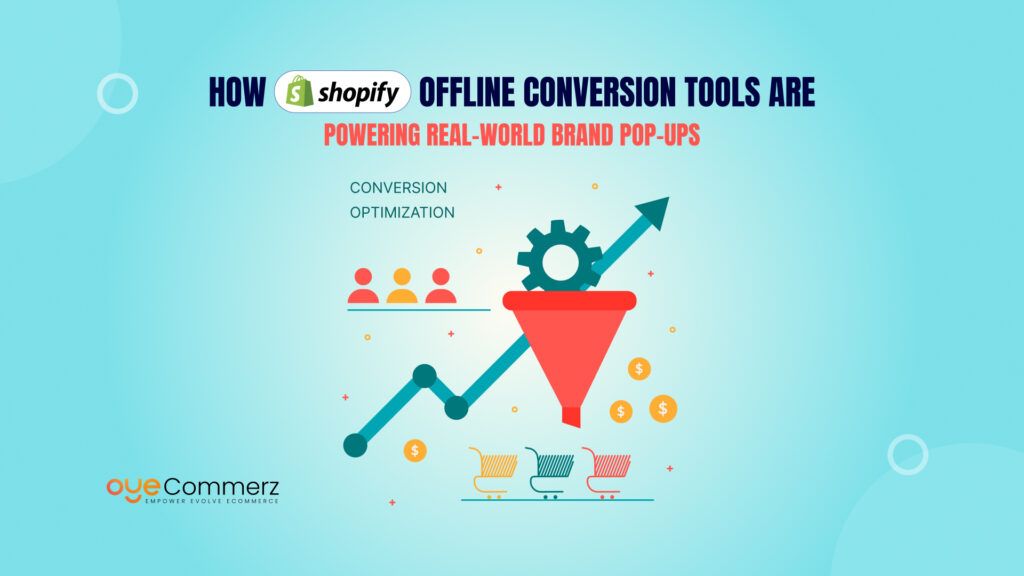Did you know that 76% of online shoppers prefer to purchase products in their own language, according to Statista? That preference isn’t just a convenience, it’s a conversion driver. With international traffic growing rapidly, U.S.-based Shopify store owners can no longer afford to rely solely on English content.
Localizing your Shopify store means more than translation, it’s about adapting your store’s entire experience to resonate with diverse cultural, linguistic, and regional expectations. By translating content for global audiences, you don’t just reach new markets; you build trust, reduce bounce rates, and increase sales.
This blog will guide you through the why, what, and how of localization, packed with practical tools, implementation strategies, and actionable insights, especially tailored for businesses using Shopify. Let’s build a store that speaks every customer’s language.
Table of Contents
ToggleWhy Localizing Your Shopify Store Is No Longer Optional
The Problem: One Language Doesn’t Fit All
English might dominate as a global business language, but it’s not the language of choice for most online shoppers. Relying solely on an English-language Shopify store limits your visibility, engagement, and sales in international markets.
Here’s what the numbers reveal:
- Only 17% of the global population speaks English natively.
- More than 72% of consumers spend most or all of their time on websites in their own language (CSA Research).
- Non-English speakers are less likely to trust, navigate, or complete purchases on English-only platforms.
For the U.S.-based business targeting global expansion, an English-only Shopify storefront creates unnecessary friction. It ignores the nuance of cultural behaviors, regional preferences, and linguistic expectations. Customers want to shop in an environment that reflects familiar terminology, currency, measurements, and tone, not just translated words.
The Agitation: Lost Sales and Weak Engagement
Ignoring localization isn’t just a missed opportunity, it’s a direct revenue leak. Shoppers who don’t feel understood abandon carts, bounce early, or never return.
Key consequences of ignoring localization:
- Lower conversion rates from non-English speaking regions
- High bounce rates due to unfamiliar or confusing content
- Limited engagement with marketing emails, pop-ups, or product descriptions
- Lack of brand credibility and customer trust
Customers perceive localized content as a sign of professionalism and customer-first thinking. Without it, your Shopify store may look out of place, even careless, to international buyers.
The Solution: Embrace Localization for Sustainable Growth
Localization is more than translation. It’s the comprehensive adaptation of your store’s language, tone, layout, currency, and UX elements to suit regional expectations.
Benefits of localizing your Shopify store:
- Improved conversion rates from international visitors
- Higher customer trust and satisfaction
- Better SEO visibility in local markets
- Stronger global brand positioning
In short, localization is a scalable strategy for sustainable, cross-border eCommerce growth.
Understanding Localization in eCommerce
What Does ‘Localizing Your Shopify Store’ Actually Mean?
Localizing your Shopify store means adapting your entire online shopping experience for specific regions or languages, not just translating text word-for-word. It’s about making your store feel native to each audience, so it resonates culturally and linguistically.
Think of localization as customizing your store for every market. Here’s what it involves:
- Language translation (accurate and contextual)
- Currency conversion (auto-adjusting prices to local currencies)
- Units of measurement (inches vs. centimeters, pounds vs. kilograms)
- Cultural tone and phrasing (avoiding idioms that don’t translate well)
- Localized images, promotions, and offers aligned with holidays, events, and cultural behaviors
For example, a winter clothing campaign won’t appeal to users in tropical climates. Localization ensures relevance, improves engagement, and shows you’ve done your homework.
Difference Between Translation and Localization
Let’s clarify a common misconception. While related, translation and localization are not the same. Here’s a side-by-side look:
Translation changes the language. Localization changes the experience.
Key Elements of Localization for Shopify Stores
Effective Shopify localization covers several core areas:
- Product Descriptions
Tailor product names, sizes, features, and tone to resonate with local shoppers. Avoid slang that doesn’t translate or make sense culturally. - Checkout Pages
Show local payment gateways, shipping methods, and currencies to reduce friction and cart abandonment. - Customer Support Pages
Offer FAQs and help content in the local language. Clear communication boosts confidence and post-sale satisfaction. - Legal & Shipping Info
Local laws vary. Ensure terms, return policies, and delivery timelines are written in the region’s native language and comply with local regulations.
Translating Content for Global Audiences: The Smart Approach
Prioritizing Languages Based on Traffic Sources
Before translating every piece of content, take a data-driven approach. Use analytics to identify which countries drive the most non-English traffic to your Shopify store.
Here’s how:
- Google Analytics: Check the “Geo” section to track user languages and locations.
- Shopify Analytics: Monitor sales reports by country to discover emerging international markets.
- Google Search Console: Identify which countries your site is ranking in and for which search terms.
Start with the top 2–3 non-English speaking regions showing high traffic or cart activity. Localizing for these audiences first ensures a higher return on effort and investment.
Human vs. Machine Translation- What Works Better?
While AI tools like Google Translate or DeepL offer speed and affordability, they often lack the nuance of tone, context, and cultural relevance.
AI Translation:
- Fast and cost-effective for bulk content
- Prone to errors, awkward phrasing, and literal interpretations
- Misses slang, humor, idioms, and emotional tone
Native-speaking Human Translators:
- Accurate, contextual, and culturally appropriate
- Adapt tone to align with your brand voice
- Higher upfront costs but better long-term engagement
Best practice: Use AI for drafts and human translators for polishing or key customer-facing content like product pages, checkout, and customer service scripts.
SEO Localization: Speaking the Language of Search Engines
Global reach requires search visibility in each region. Translating keywords and SEO elements is crucial.
Key focus areas:
- Localized keywords: Research what people in each country are actually searching for, not just translated versions.
- Meta descriptions & titles: Write these natively to boost click-through rates.
- Image alt text & URLs: Localize image descriptions and ensure URLs include regional terms.
Proper SEO localization helps your Shopify store rank higher in local search engines and improves discoverability by native-speaking audiences.
Steps to Successfully Localize Your Shopify Store
Localization is more than just translation, it’s a strategic shift that builds long-term customer trust across borders. Here’s a step-by-step approach to properly localizing your Shopify store for international growth.
Step 1- Conduct a Market Research Audit
Before translating anything, start by deeply understanding your target market.
- Cultural behavior analysis: Evaluate how customers shop, what payment methods they prefer, and which promotions are most effective in that region.
- Product-market fit: Determine whether your products align with local preferences, climate, usage habits, or cultural sensitivities. For instance, clothing sizes, dietary norms, and even color preferences can vary dramatically.
Tip: Use Shopify’s built-in reports, Google Trends, and regional surveys to support data-backed decisions.
Step 2- Choose the Right Translation App or Partner
Selecting the right localization tool is essential for scalability and long-term efficiency.
Popular Shopify Translation Tools:
- Weglot: Automatic translation with manual editing and SEO optimization.
- Langify: Supports multiple languages and integrates smoothly with Shopify themes.
- Translate & Adapt (Shopify’s native app): Enables multilingual setup and localized dynamic content.
Selection Criteria:
- Ease of use and theme compatibility
- SEO-friendly structure
- Human-editable translations
- Automatic language detection
- Multilingual URL support
Avoid plugins that duplicate content or disrupt the site’s performance.
Step 3- Localize Storefront Content and Navigation
Your homepage, menus, and banners make the first impression. They must reflect the language and layout preferences of the local audience.
- Translate all major headings and navigation labels
- Localize CTAs to reflect cultural communication styles (“Buy Now” vs. “Shop Today”)
- Adjust visual elements like models, seasonal backgrounds, or text overlays to match regional relevance
Step 4- Tailor Product Pages and Descriptions
Each product should speak directly to the local customer.
- Adapt product titles, descriptions, and specifications based on region
- Use relevant measurements (inches vs. centimeters, ounces vs. grams)
- Replace any images, icons, or usage demonstrations that may seem culturally inappropriate or confusing
- Maintain tone consistency across translated content, matching the voice of your brand in the native language
Step 5- Localize Checkout Experience
The checkout experience must feel frictionless and familiar to your audience.
- Provide region-specific address formats (e.g., ZIP codes in the U.S. vs. postal codes in Canada or the UK)
- Enable local payment gateways like iDEAL (Netherlands), Klarna (Europe), or Paytm (India)
- Offer shipping options with clear pricing and timelines based on location
- Display currency with proper symbols and formatting
A localized checkout builds confidence and reduces cart abandonment.
Step 6- Translate Customer Support and FAQ Pages
Support is a crucial extension of the user experience. It must be clear, accessible, and culturally sensitive.
- Translate FAQs, shipping policies, and return information in regional languages
- Provide support email or chat in local languages or use multilingual bots
- Integrate tools like Gorgias, Zendesk, or Tidio with language switching functionality
Ensure customers feel supported even after the sale.
Step 7- Test, Optimize, and Iterate
Localization is an ongoing process. Use data and customer feedback to refine your strategy.
- Conduct A/B testing to measure performance of localized content vs. default
- Track metrics like bounce rate, conversion rate, and time on page for each language version
- Use customer feedback, surveys, and support ticket analysis to improve translations and navigation
- Update translated content regularly to match seasonal campaigns or product updates
Continuous optimization ensures your Shopify store remains relevant and competitive across markets.
Tools and Apps to Help with Shopify Localization
The right tech stack is essential to effectively localize your Shopify store. With dozens of apps available, it’s important to choose tools that align with your goals, offer seamless integration, and maintain site performance.
Top 5 Translation Apps for Shopify
- Weglot
A powerful all-in-one localization tool offering automatic translation, manual editing, and SEO optimization. It supports over 100 languages and creates dedicated language subdomains. - Langify
Known for easy setup and strong multilingual capabilities. It doesn’t rely on automatic translations, allowing store owners full control over content quality. - Translate & Adapt (by Shopify)
Shopify’s native translation solution provides basic but reliable support for multiple languages. Great for stores starting their localization journey. - Transcy
Offers both translation and currency conversion. It supports auto-language detection, making it ideal for targeting multiple countries simultaneously. - GTranslate
Uses Google Translate API for instant translation with options to edit manually. Good for budget-conscious stores needing quick multi-language setup.
Other Tech Stack Essentials
- Currency Switchers: Display product prices in local currency based on user location. Apps like BEST Currency Converter are popular.
- Geo-targeting Tools: Automatically redirect users to the correct language version or regional store using IP detection.
- Local Payment Processors: Integrate payment gateways like Klarna, Razorpay, iDEAL, or Alipay to offer familiar and trusted payment options in each market.
These tools ensure your localization efforts are technically sound and customer-friendly
Common Pitfalls to Avoid When Localizing Your Shopify Store
Localizing your Shopify store opens global doors, but only if done right. Many brands overlook critical aspects of localization, leading to weak engagement and lost sales. Below are some of the most common mistakes merchants make and how you can steer clear of them.
Over-Reliance on Automated Tools
- Tools like Google Translate or auto-translation plugins can be useful, but they shouldn’t replace human review.
- Automated translations often misinterpret context, tone, and industry-specific language, especially in product descriptions or checkout instructions.
- Poor translations break trust, a customer is unlikely to purchase from a brand that can’t communicate clearly in their language.
Solution: Use AI tools for speed, but always have native-speaking translators audit and refine the content.
Ignoring Regional Cultural Nuances
- Localization isn’t just about language, it’s also about cultural alignment.
- Visual elements like colors, symbols, and even certain words can carry different meanings across cultures.
- Jokes, idioms, or culturally specific references may fall flat, or worse, offend.
Solution: Understand the cultural expectations and sensitivities of your target audience before launching localized content.
Failing to Update Localized Content Regularly
- Many businesses translate content once and forget it.
- Over time, this creates gaps in product information, promotional offers, or shipping details, especially during seasonal sales or policy updates.
- Users may lose trust if the content doesn’t reflect real-time changes or local expectations.
Solution: Create a content update cycle to keep all language versions aligned with your primary store updates.
Avoiding these pitfalls will make your Shopify localization efforts more effective and reliable across global markets.
Measuring the ROI of Translating Content for Global Audiences
Understanding the return on investment (ROI) from localizing your Shopify store is crucial to justify ongoing efforts and optimize strategies. Measuring success requires tracking specific metrics that reflect user engagement, sales growth, and customer loyalty across different regions.
Metrics to Track Success
- Conversion Rate by Region: Track how many visitors complete purchases in each localized market. An increase in conversion rates after localization indicates improved customer experience and relevance.
- Bounce Rates: A high bounce rate in a specific language version suggests issues with content clarity or cultural fit. Lower bounce rates post-localization show better engagement.
- Customer Satisfaction and Retention: Monitor customer feedback, reviews, and repeat purchase rates. Positive sentiment and loyalty from international customers are signs that your translated content resonates well.
Tools for Tracking Performance
- Google Analytics: Segment traffic and conversions by country and language to analyze the impact of localization on different markets.
- Shopify Reports: Use Shopify’s built-in analytics to monitor sales trends, average order value, and customer behaviors across localized stores.
- Heatmaps and Behavior Tools: Platforms like Hotjar or Crazy Egg provide visual data on how users interact with localized pages, helping identify areas for improvement.
By closely monitoring these indicators, you can make data-driven decisions, fine-tune your localization strategy, and maximize your global revenue potential.
Future-Proofing Your Global Strategy
As eCommerce continues to evolve, staying ahead means continuously adapting your Shopify store’s localization efforts. Here’s how you can build a resilient, future-ready strategy that scales smoothly with technology and market trends.
Scaling with AI-Powered Localization
- Leverage smart automation for faster translations, but combine with human edits for accuracy.
- Use context-aware AI tools that understand nuances and industry-specific terms.
- Implement real-time content updates across multiple languages effortlessly.
- Monitor AI-driven insights to optimize your messaging continuously.
Preparing for Emerging Markets
Emerging markets offer massive growth potential. Focus on languages and regions that are rapidly expanding online:
Use this checklist as a practical guide to ensure your localization efforts stay relevant and scalable. It’s designed to help you maintain consistency while adapting to global market trends.
Quick Future-Proof Localization Checklist
Embracing these strategies will ensure your Shopify store remains competitive, relevant, and poised for sustainable global growth.
Ready to take your Shopify store global but unsure where to begin?
Localizing your Shopify store is the key to building trust and loyalty with customers worldwide. Translating content for global audiences not only boosts engagement but also drives sustainable growth.
Start small, test often, and optimize continuously to see real results.
Explore OyeCommerz’s expert Shopify services to help you unlock your store’s full international potential today.
Contact to Migrate your Site to Shopify Now
Conclusion
Localization is no longer a luxury, it’s a must-have for global eCommerce success. Localizing your Shopify store means more than just translating content; it’s about creating personalized, culturally relevant experiences that resonate with customers worldwide.
This approach builds trust, enhances engagement, and boosts conversions, turning your store into a truly global brand. Begin optimizing your Shopify store today to unlock new markets and expand your reach seamlessly, efficiently, and strategically. The world is waiting, make sure your store speaks its language.
Frequently Asked Questions
Use localization apps, adapt content for regional preferences, and customize currency, language, and checkout experience.
Use built-in Shopify Translate & Adapt app or third-party tools like Weglot or Langify to translate content manually or automatically.
Install a translation app from the Shopify App Store, choose your target languages, and configure settings to display translations.
Shopify offers basic automatic translation via the Translate & Adapt app, but for accuracy and tone, manual edits or human translation are recommended.




